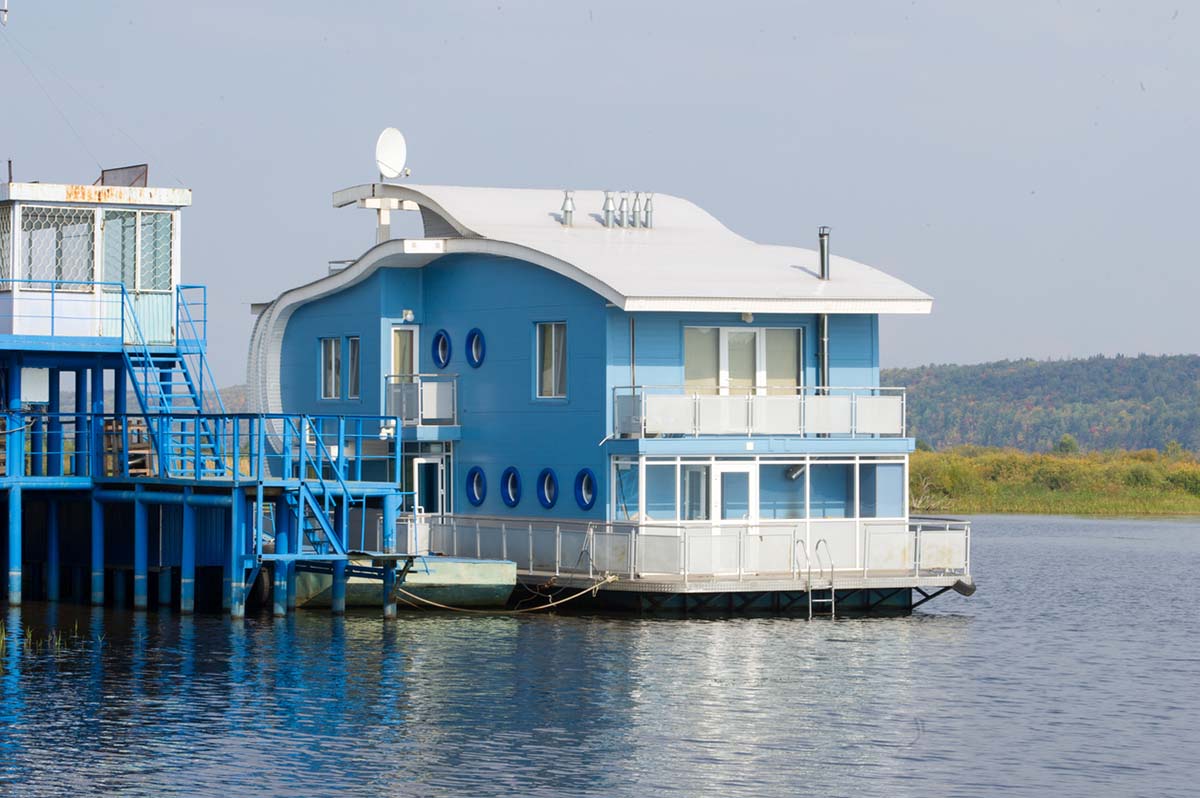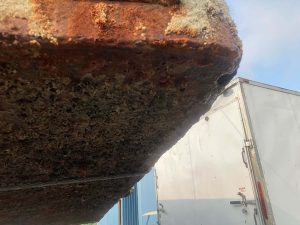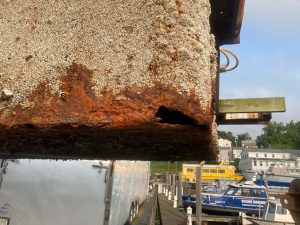
Aging Boats and Silent Liabilities
Published on May 2, 2024Boats age. As boat owners we may not want to admit it or recognize it. And through innovation and technology, boats can last much longer than they used to. But, like all of us humans, issues seem to occur and warrant attention, particularly as they get older. That continues to be mostly good news for those facilities that provide boat and engine servicing. But, even for those facilities there may come a point where the liabilities, often silent and lurking beneath the surface, outweigh the positives. For facilities that don’t provide servicing, that point may come sooner than later.
The typical rough estimate is that there are about 12 million recreationally oriented registered boats in the United States, and a more roughly estimated total of about 30 to 40 million worldwide – not including things like canoes, kayaks and so on. These are substantial numbers, and as time goes by, we are accumulating ever larger numbers of older boats, many that have reached beyond their useful life.
Costly Issues Arise
Yes, there are those among us who are passionate about their old boats and have the time, talent and/or resources to keep them in great shape. But that does not apply to the majority. To be fair, as boats start aging out, the cost to make repairs also starts to make less and less sense, as does the ability to even be able to fix things.
Compounding the problem is the low cost of an old boat may seem very attractive to a naïve buyer, who then does not have the ability to keep it going and fix what needs fixing. And, of course, there are some boat owners who seem to always take the least expensive option, postponing more costly fixes, as well as some who seem to prefer to simply ignore potential issues. These three categories should get the facility’s attention, as they are typically red flags signaling the potential for major problems ahead.

One of those problems is the abandoned boat. It is clearly a problem that has been on the upswing, with boats being left at the marina, out at anchor, or even tied up to some unsuspecting waterfront homeowner’s dock. Nothing like waking up to a big old junker left at your bulkhead. Getting rid of these boats can be expensive and can come along with the potential entanglement in a legal and bureaucratic nightmare, including, in some instances, the need to ‘arrest’ the boat.
Another problem, though, can be even worse. Years ago, we used to mail out a cartoon-based nautical calendar, and often there was a Top 10 list. One of those was the “Top 10 Boater Worries,” and number one on the list was, “That sinking feeling.” While most boaters are likely worried about sinking when they are on the vessel, the reality is that for every boat that sinks at sea, four or so will sink at the dock. Not that all these will be old boats, but older boats are at greater risk.
There are also more older boats, houseboats and big pontoon boats being used as second or primary homes, and there is a growing trend to create boatels. These can be good revenue, particularly for marinas with shallow water depths. But most of these boats seldom, if ever, leave the marina. Many do not have engines, or at least not working engines. And many, if not most, rarely get hauled. This is where the silent problem comes into play. There are also concerns that in storm conditions many of these boats may not be as sturdy and durable as had been thought.
The major reasons for hull failures typically center around thru-hull fittings and the composition or integrity of the hull itself. Many of these issues are easily discerned just by looking at the boats, preferably on dry land.
Decaying Boats
But it is also important to consider how many boats stay in the water at your facility year-round. In warmer climates it’s common, and there are many that stay in year after year. In most colder climates boats are traditionally hauled every year to avoid ice issues, though with more facilities deploying deicing devices some are staying in year-round. And then there are the larger recreational boats that are not easily hauled.
It is a fact that large boats that stay in year-round, year after year can start to develop problems. Boats with metal hulls can decay and eventually create small holes that slowly enlarge, allowing water to seep into the hull or pontoon, and the boat gradually starts to lower into the water. Sometimes it is so gradual that no one notices until it is too late.
Once the boat sinks it becomes a real headache. There are pollution issues and trying to surround the boat with a boom or other containment materials can be challenging, particularly if there are winds or difficulties caused by locations of other boats. Depending on the boat’s weight and how the sinking boat is tied up, it can take the adjacent dock(s) with it, causing not only damage to the docking facility but possibly damage to other boats as well. If the boat is in a covered slip, and the dock it is tied to has a roof structural component on that float, the sinking boat can damage the roof as well.
In a somewhat similar vein, there is a rule of thumb that chains and anchors should be picked up and serviced at least once every five years, and some locations and regions require it every three years. This is to ensure that the chains and anchors are still structurally sound for the functions that they are being used for. This makes sense, and we have often found that the chains – particularly in salt water – are being eaten away, diminishing their strength. Decaying anchoring systems are one of the main causes of boats leaving their moorings – particularly in storms and high winds – and ending up in someone else’s back yard, or perhaps crashing through your marina.
Some will argue that fiberglass hulls are not an issue. But they can be, both with the thru-hull fittings, or due to weak spots or decay caused by a problem, such as hitting something, especially when it’s something that didn’t seem like such a big deal at the time.
Other potential causes for sinking can be tied to failures of seacocks, split cooling water hoses, rusted hose clamps and failed stuffing boxes. And of course one cannot forget failed bilge pumps, though often it seems the failed bilge pump is the last straw after leaks had been lurking and getting worse over an extended period.
The horror stories can be endless and there are no easy workarounds once the problem has occurred. The immediate response will involve containing the mess, securing the site and beefing up other potentially damaged portions of the facility. Then comes removal, cleanup and any repairs, and dealing with customers and all the various regulatory authorities.
Thereafter, one must deal with who is going to pay the bills, who is at fault, whether lawsuits will be filed, etc. Some have said that it is the boater’s responsibility to cover the monetary damages – and of course their insurance company will look to determine if there is coverage or not for a myriad of reasons.
Speaking of insurance, it may well be another silent liability of sorts. As insurance companies rack up losses, they are increasingly looking to limit coverage. Some companies are no longer insuring old boats. Some are limiting coverage, with the list of exclusions seeming to increase each year, and not necessarily limited to old boats. Proof of insurance is often required as part of a slip and/or storage contract, but how often does the fine print get reviewed? Similarly, how often do we all review in detail our own insurance coverage and particularly the exclusions?
Finding Solutions
So, what are the solutions? Requiring boats to be hauled periodically, possibly every three to five years, to have the hulls and thru-hull fittings inspected. The U.S. Coast Guard requires all commercial passenger-carrying vessels to be hauled approximately every two years, depending on different variables. The inspections are not only for leaks but hull soft spots and all the fittings. The inspections can be visual or more substantial.

The marina can make money from hauling and relaunching. As for the inspection itself, one can use an outside professional that is certified to undertake the inspection, or your own yard personnel if so qualified. For boats that cannot be hauled, in-water inspections are certainly better than none.
There are liabilities that are associated with the inspections, and it is recommended that the inspection be well documented by including pictures, tests performed, whether any remediation was undertaken, etc. The inspection reflects the boat’s condition at a point in time, but it does not mean that one cannot develop soon afterwards. So, the documentation is meaningful when it comes to liability issues.
In between haulings and more formal inspections, encourage your boat owners to carry out their own review of what’s going on in their bilge on a routine basis, and offer some education for those boaters who may not quite know their way around or what specifically to look for.
Another avenue involves encouraging boat manufacturers not to skimp on the kinds of materials they are using, particularly when it comes to those thru-hull fittings. It is also important to make sure your boat owners understand that going cheap or simply making the wrong choices in materials can lead to a much quicker likelihood of failure and a much greater risk of sinking.
As for what to do with old boats, many boat manufacturers are starting to take a cradle to grave mindset when it comes to designing and building new boats, whether by choice or by government requirements. They are focusing on building them with an eye towards being able to reuse, recycle or readily dispose of the materials, all at reasonable costs. This is like efforts well underway in the automobile industry, and something needed. Of course, these kinds of efforts are not going to solve all the problems with the current or near-term fleet of ageing boats.
On that front, France has instituted one of the most aggressive attempts to deal with the problem, with its APER program that got underway in 2019. Funded by a relatively modest tax on new boat sales, a network of boat disposal sites has been set up nationwide where one can bring your old boat and they will take it for free. The only cost to the owner – or whoever else may be stuck with trying to get rid of it – is getting the boat to one of the facilities.
On the more entrepreneurial side, there seem to be more salvagers getting into the business of old boat recycling and disposal. Boatbreakers in England will take care of everything from the transport to the breakdown, reuse, recycling and proper disposal of a boat, with the fee in part dependent on just how much value there is in the reusable and recyclable stuff onboard. When it comes to the fiberglass though, they still must cut it up and send it to a landfill or incinerator.
In the not-too-distant future there is hope that there will be commercially viable fiberglass recycling, though now most attempts are still in the experimental or relatively small-scale stages. This would be a bit of a game changer.
Dan Natchez, CMP, is president of DANIEL S. NATCHEZ and ASSOCIATES Inc. He can be contacted by phone at 1/914/698-5678, by WhatsApp at 1/914/381-1234, by email at dan.n@dsnainc.com or online at www.dsnainc.com.
| Categories | |
| Tags |





